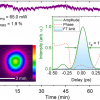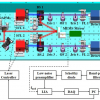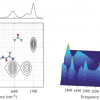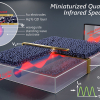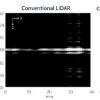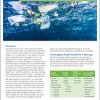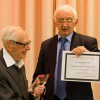The Center for Structural Biology and Bioinformatics at the Free University of Brussels (Université Libre de Bruxelles, ULB) has developed expertise in the analysis of biological molecules using infrared spectroscopy. Now, with the help of Scottish microarray instrumentation company, Arrayjet, the Center has integrated microarray technology to speed up and enhance the analysis of bio molecules such as proteins, which are exposed to hundreds of experimental conditions on a single chip using infrared imaging.
ULB’s method is based on focal plane array technology that detects and records tens of thousands of spectra simultaneously. This is mostly used to determine cancer cell types obtained from cultures or from surgical resections. In the case of proteins, less than one picogram is required to collect high quality spectra with infrared imaging technology. Moreover, this provides information on their structure, glycosylation, phosphorylation, lipid or detergent content in a single spectrum. All these parameters have become a major concern during the production and storage of therapeutic proteins.
Microarray technology now makes it possible to quickly analyse the infrared spectrum of bio molecules with a high throughput analysis which The Center for Structural Biology and Bioinformatics is now developing in collaboration with two applied research projects which both use Arrayjet’s Marathon microarray technology.
The first of these projects is ROBOTEIN, a Belgian inter-university action aimed at providing industrial partners with a platform to produce, purify and test the structure and function of proteins. This is for high throughput quality control of proteins experiencing a wide variety of processes and environments and will be tested by the combination of the Marathon microarrayer and infrared imaging of the microarrays.
The second project is MIRSEC, an initiative to create a spin-off active in the field of protein quality control by infrared spectroscopy. This includes protein quantification, protein structure, quantification of protein phosphorylations and glycosylations, quantification of other molecules such as lipids and detergents. All parameters are obtained from a single spectrum by chemometric methods. High throughput analyses will be reached by combination of the Marathon microarrayer and infrared imaging.
Professor Erik Goormaghtigh, Head of Structure and Function of Biological Membrane at the Center of Structural Biology and Bioinformatics explains what he sees are the benefits to using microarray technology in this field.
“The Marathon instrument from ArrayJet was selected for the quality of the spotting, the small size of the spots (50–60 µm) on various substrates as observed in preliminary tests and because it is provided with a dust-free chamber that is temperature and humidity controlled we also found it very competitive cost.”
Russell Brown, European Sales Executive, Arrayjet adds: “Université Libre de Bruxelles, ULB has become a leader in the analysis of biological molecules by infrared spectroscopy. We are very pleased that ULB has selected Arrayjet technology for its research projects. ULB have chosen our high throughput Marathon Classic Microarrayer for its printing and I am confident that this decision will pay off for the CSBB laboratory.”
The Center for Structural Biology and Bioinformatics installed the Arrayjet Marathon Classic in April this year.









